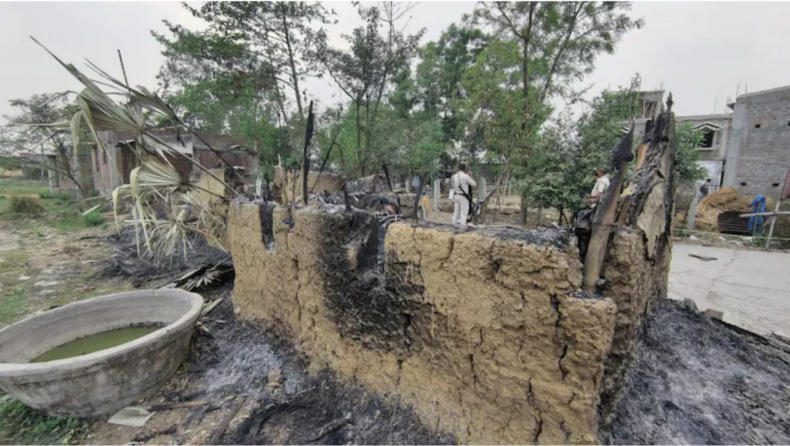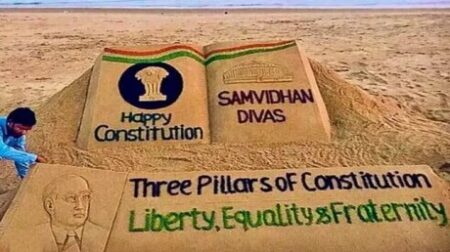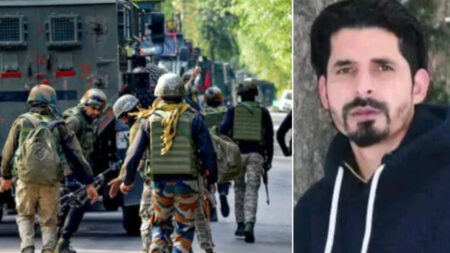Last Monday, Trinamool Congress (TMC) Deputy Pradhan Bhadu Sheikh was murdered in his village Bogtui in Birbhum district in West Bengal. Within hours, a mob attacked the households of the suspected killers, thrashed them, vandalized their homes and burnt them alive.
At least 8 people died (which has now raised to 9)—six girls and other children. The people were burnt alive by setting a house in fire where they were hiding and there was almost no one to help the innocents, said witnesses. This also gave rise in tussle between both opposition and ruling party and this started a dirty ‘blame-game’ and politics over such a sensitive issue.
Bengal’s Brief History of Violent Politics and Possible Solutions
The question in our mind arises after such an incident is how and why in Bengal, the land of Tagore, Ray and having a rich political and social history. This can be true to some extent in theory but if we look into Bengal’s history especially after independence it makes more sense.
For the beyond six decades, West Bengal has been one of the most politically violent states in the country. To the volume of political homicide that occurs here but very infrequently makes news, it is only when girls and youngsters are burnt alive that an incident is revealed to the whole country.
Actually, this violence came along with the Naxalite movement that was in peak at Calcutta (Kolkata) the time when people were asked to remain at home once it was dark. Even the leaders of the movement believed that the justice to people who have been sufferers of the capitalist machine i.e., laborer can only be served when policeman of the area will be murdered.
Naxalism became more violent after the Congress won the state elections in 1972, there have been number of men, women, children that were killed and dumped into the Hooghly River mere suspicion of being Naxal sympathizers.
Left came to power in West Bengal in 1977, and what we saw was the most brutal police action in India. In 1979, the authorities forcibly evicted Partition refugees who had settled in Marichjhapi withinside the Sunderbans, but out of surprise these refugees were promised rehabilitation through the Left Front in its election campaign but were never given the same.
All these killings were brutal and are condemned but, he 1970 Sainbari killings still haunt Bengal. Three people of Sain family in Bardhhaman were murdered by CPI(M) thugs and the mothers were pressured to eat rice smeared with the blood of her sons.
The crime was just that these people actively supported congress, the perpetrators by no means were punished. One of the alleged instigators Nirupam Sen, went on to become state’s enterprise and trade minister.
In 2001, eleven TMC supporters were burnt alive in their homes in Chhoto Angaria village through CPI(M) goons. In 2007, 14 people were shot dead by the police at Nandigram, where the Left Front was making plans to install a chemical enterprise hub. Violent clashes withinside the place among Left Front and TMC political members over 2 years resulted in over 50 deaths.
In 2011, 9 people including 4 girls were shot dead through CPI(M) cadre in Netai village. In 2014, Buddhadeb Bhattacharjee, who was chief minister on the time of the carnage, admitted that “it was very wrong… our boy made a mistake, a totally horrific mistake”.
These are simply incidents that stuck the attention of the media. The reality is that political violence was everyday affair that was in existence in West Bengal since the mid-1960s.
Every election—from panchayat to municipal bodies to state assembly—is marred through violence. In the 2018 panchayat elections, TMC gained one-third of the seats unopposed. The only reason behind this was the politicians were in fear to even record their nominations.
The Bhartiya Janata Party (BJP) claimed that more than 100 of its cadre have been killed withinside the aftermath of last year’s state elections, which the TMC swept.
Once more, we by means will be able to get to the true death count, however it’s a truth that lots of people were forced to flee their homes and live in hiding. They faced physical harm, misplaced their livelihoods and have been even denied their quota in ration shops.
The current tragedy in Bogtui appears to had been an intra-TMC conflict over the loot from the unlawful stone and sand trade. The only possible solution to this is to conduct free and fair elections, having a greater social and political hierarchy.
Published By : Revathy G Sanal
Edited By : Subbuthai Padma













